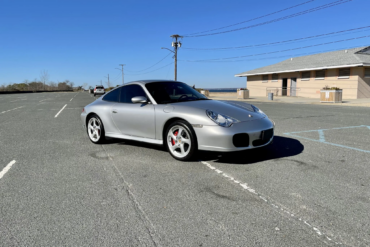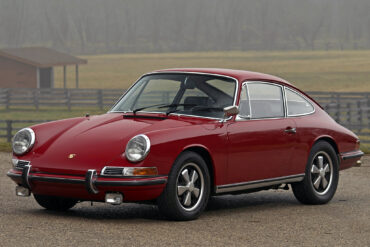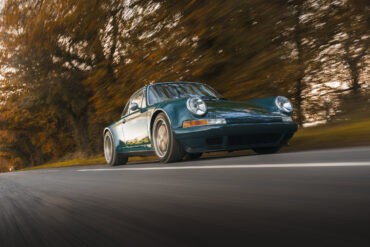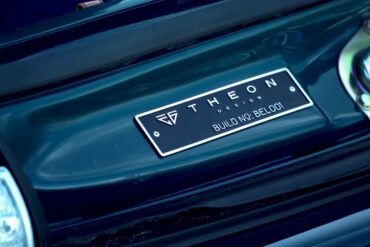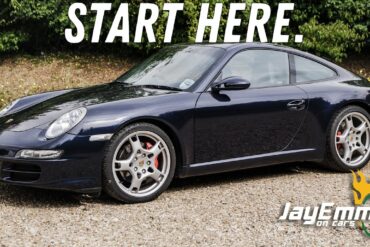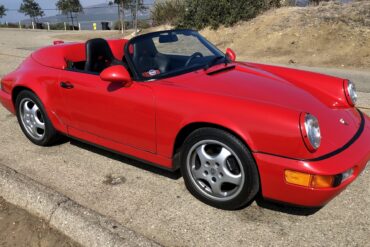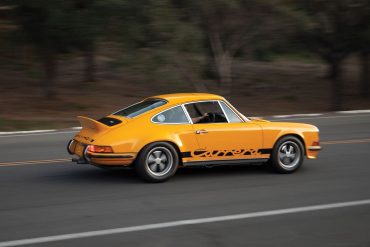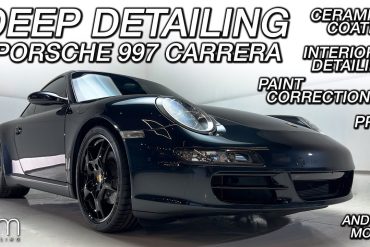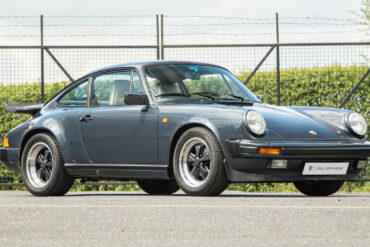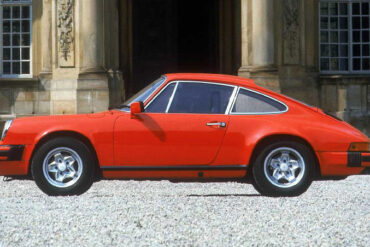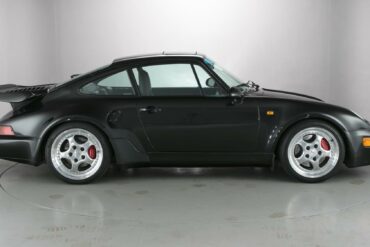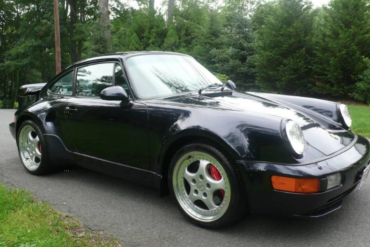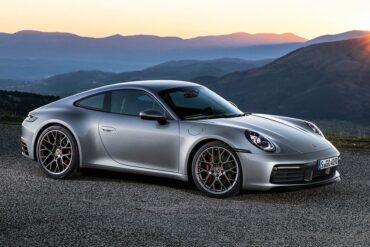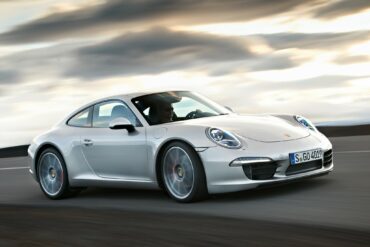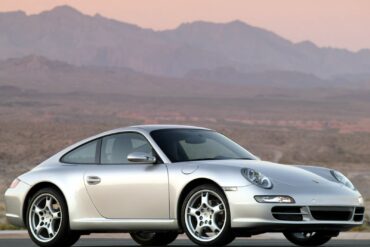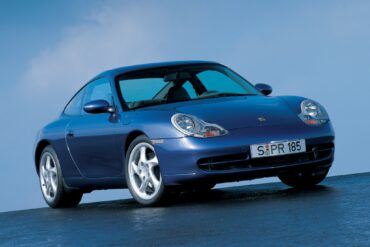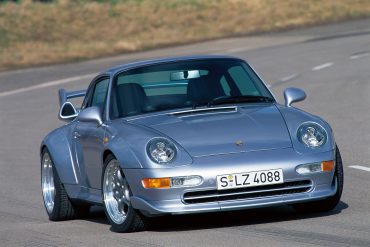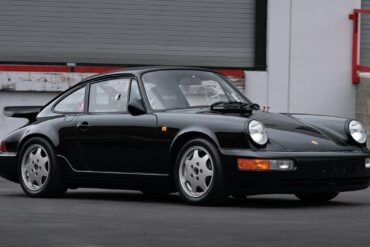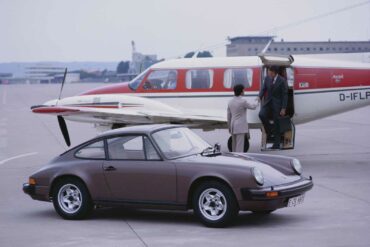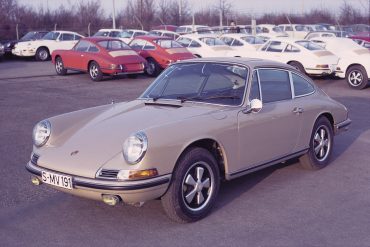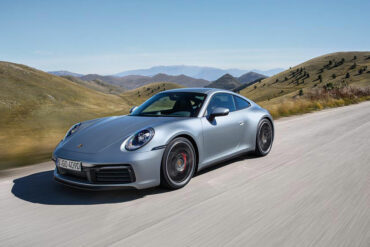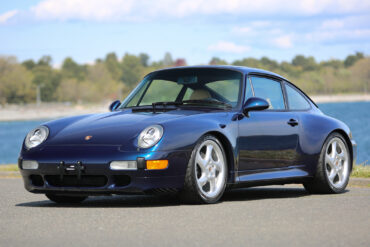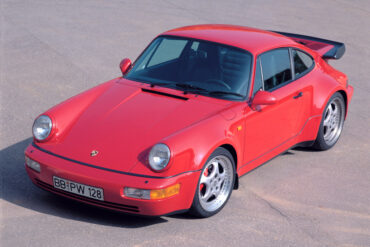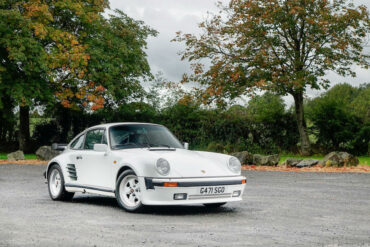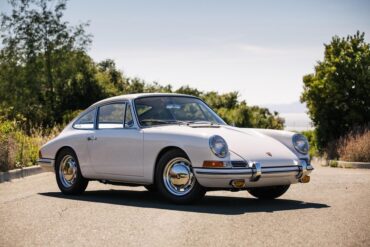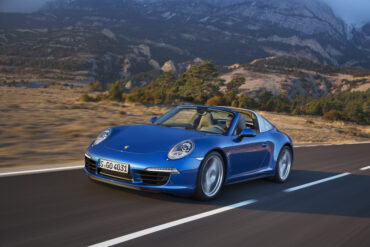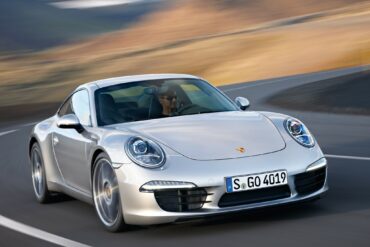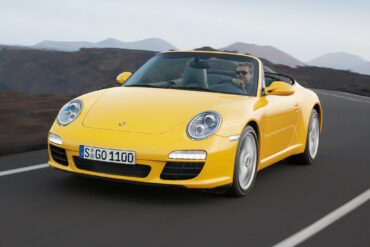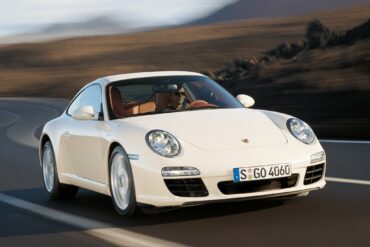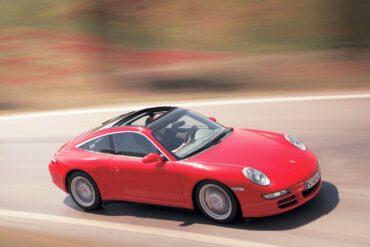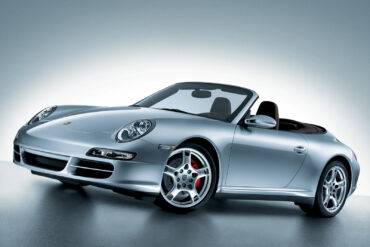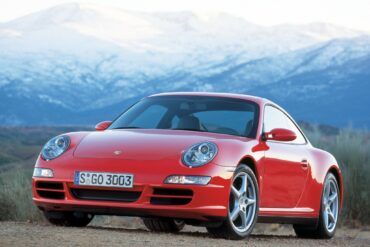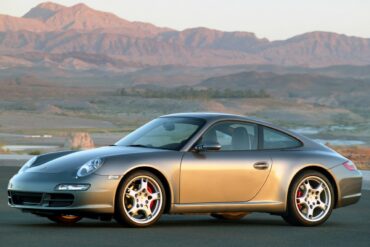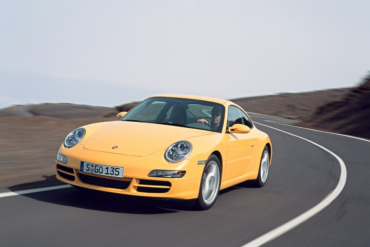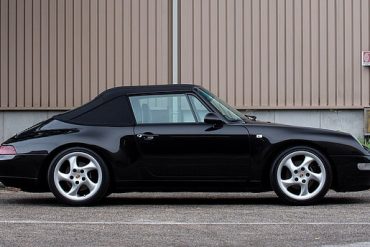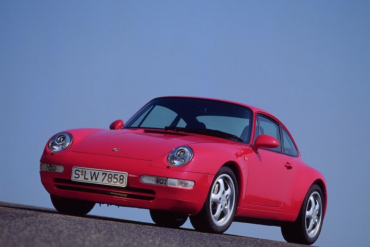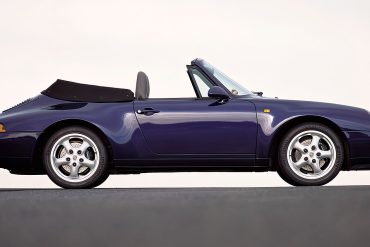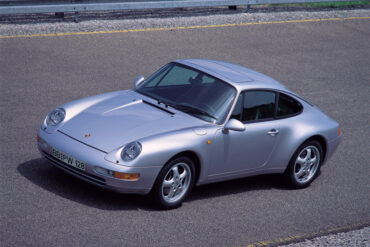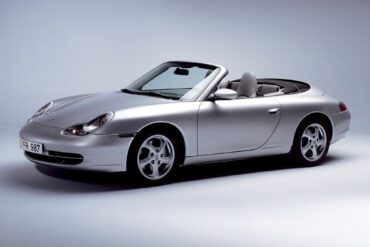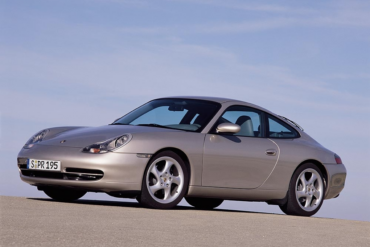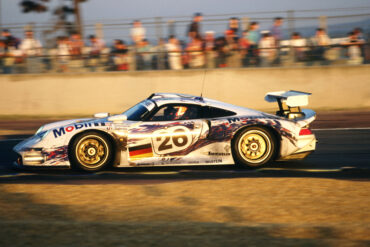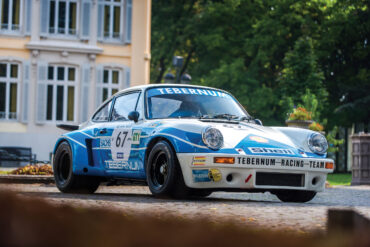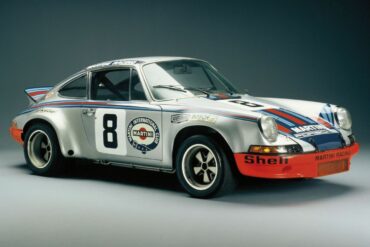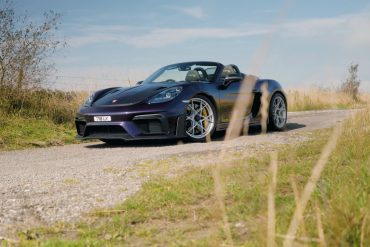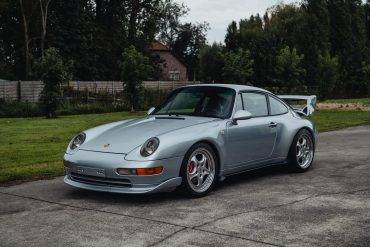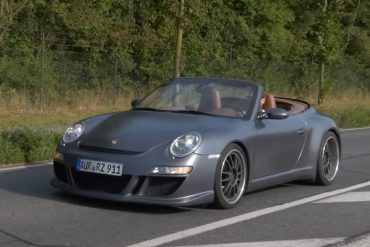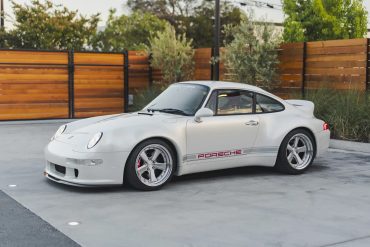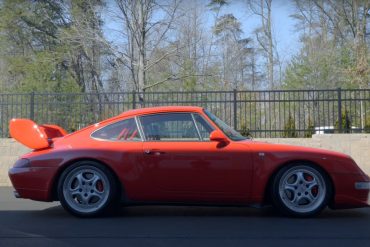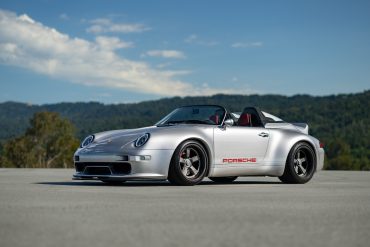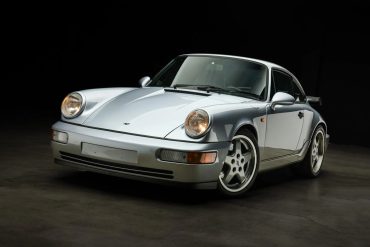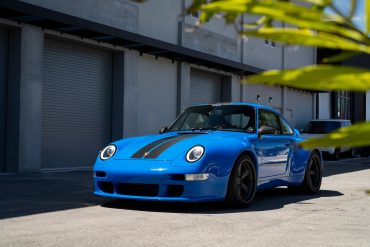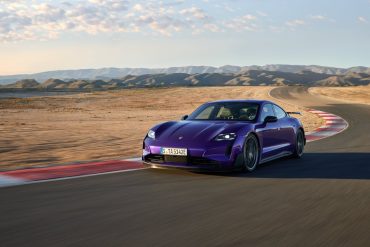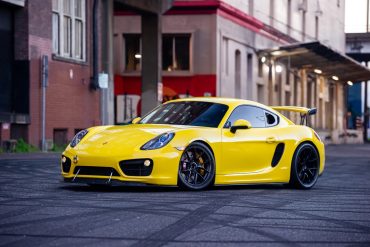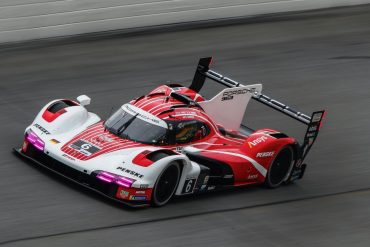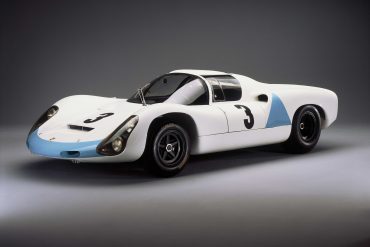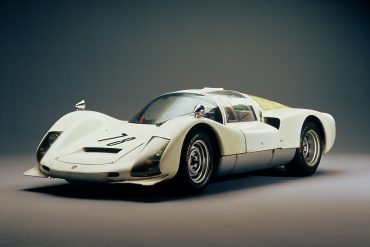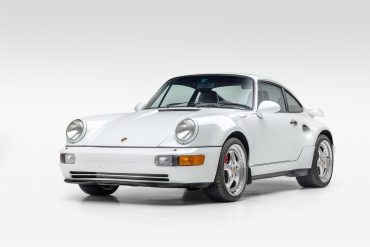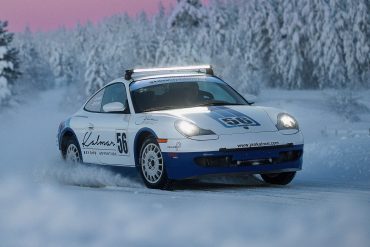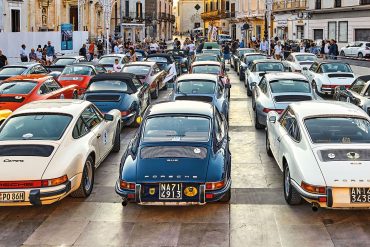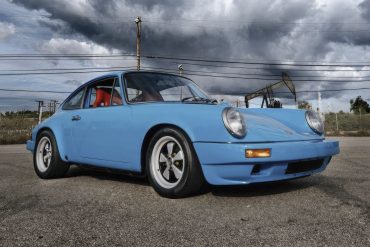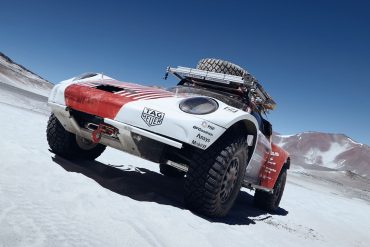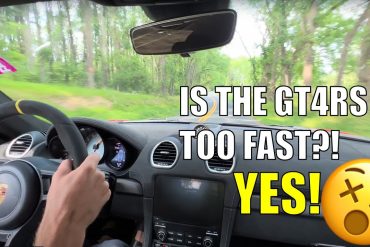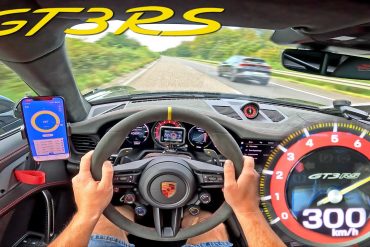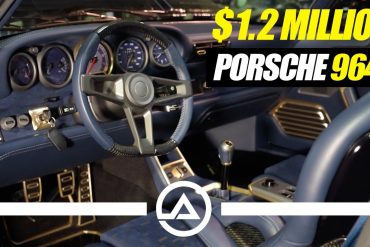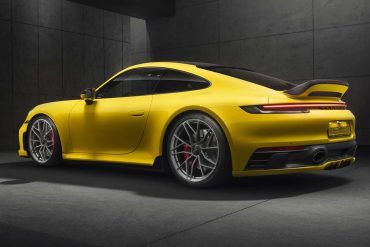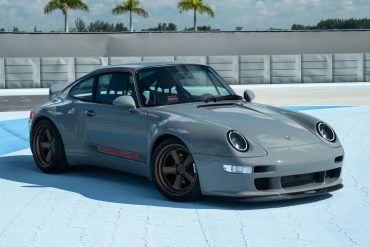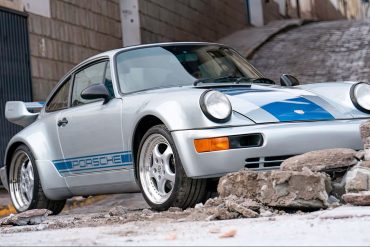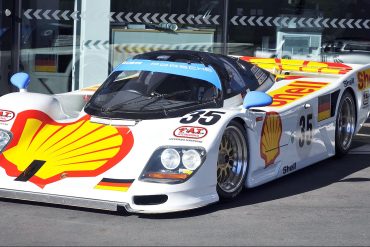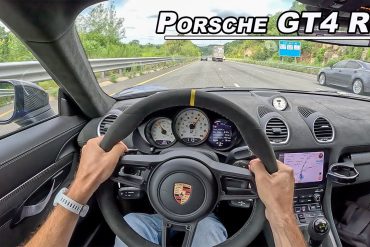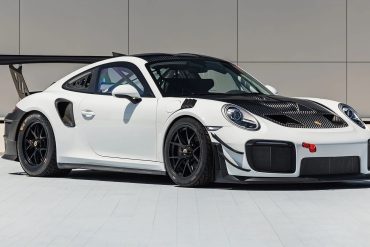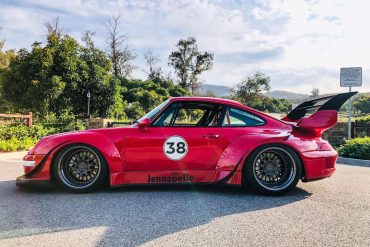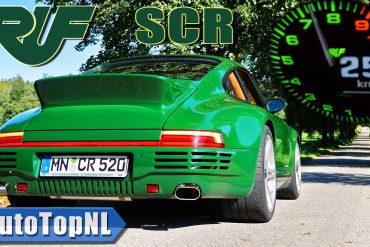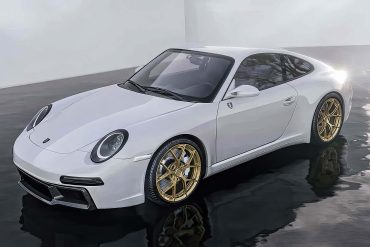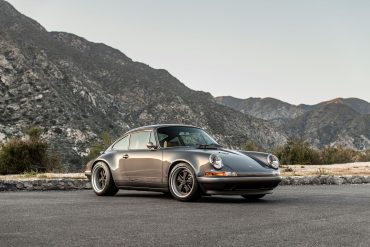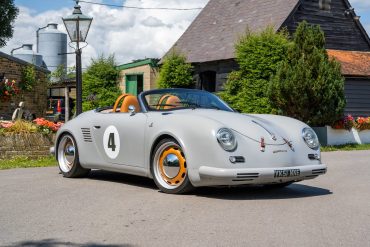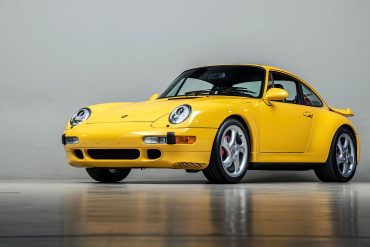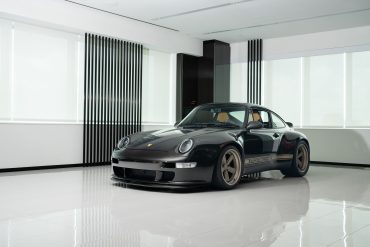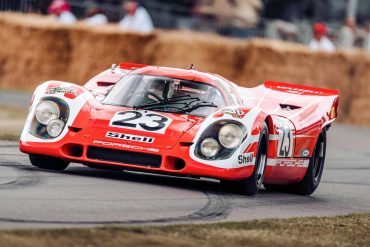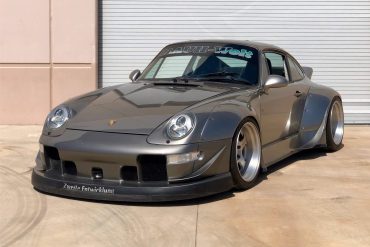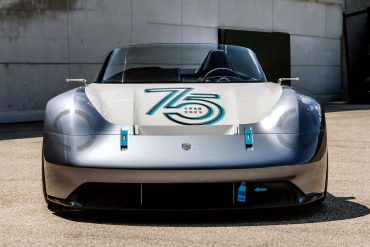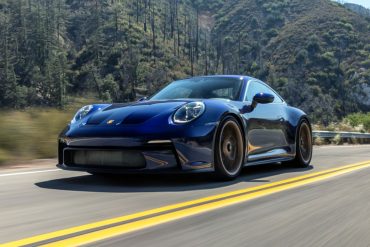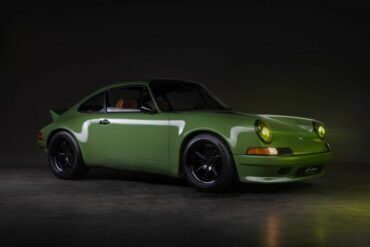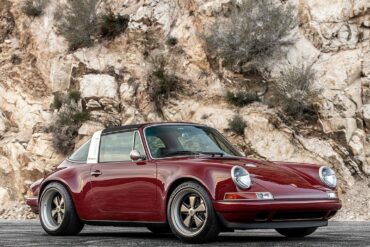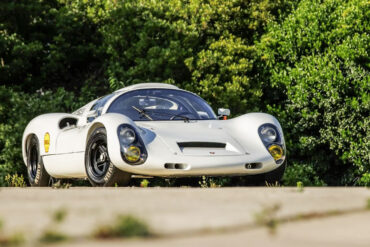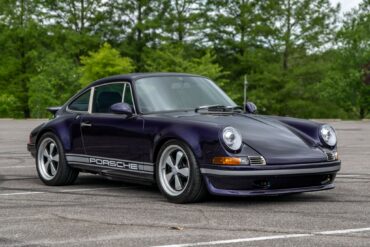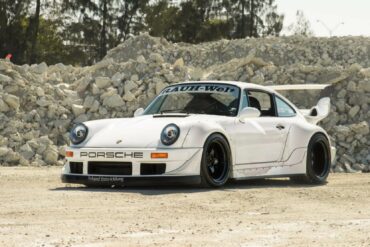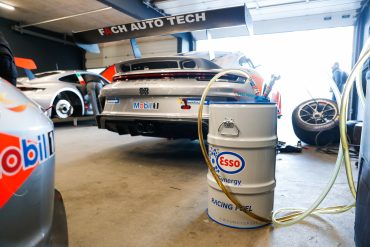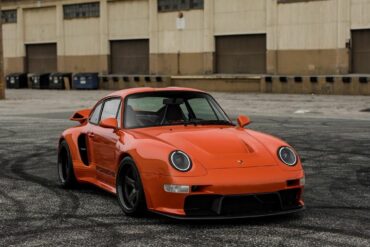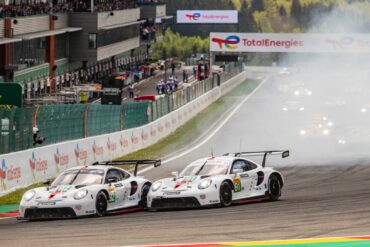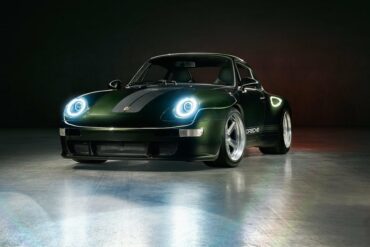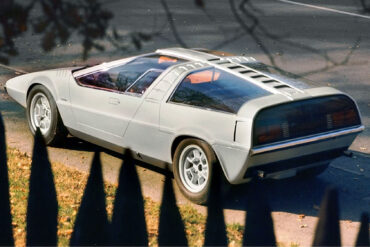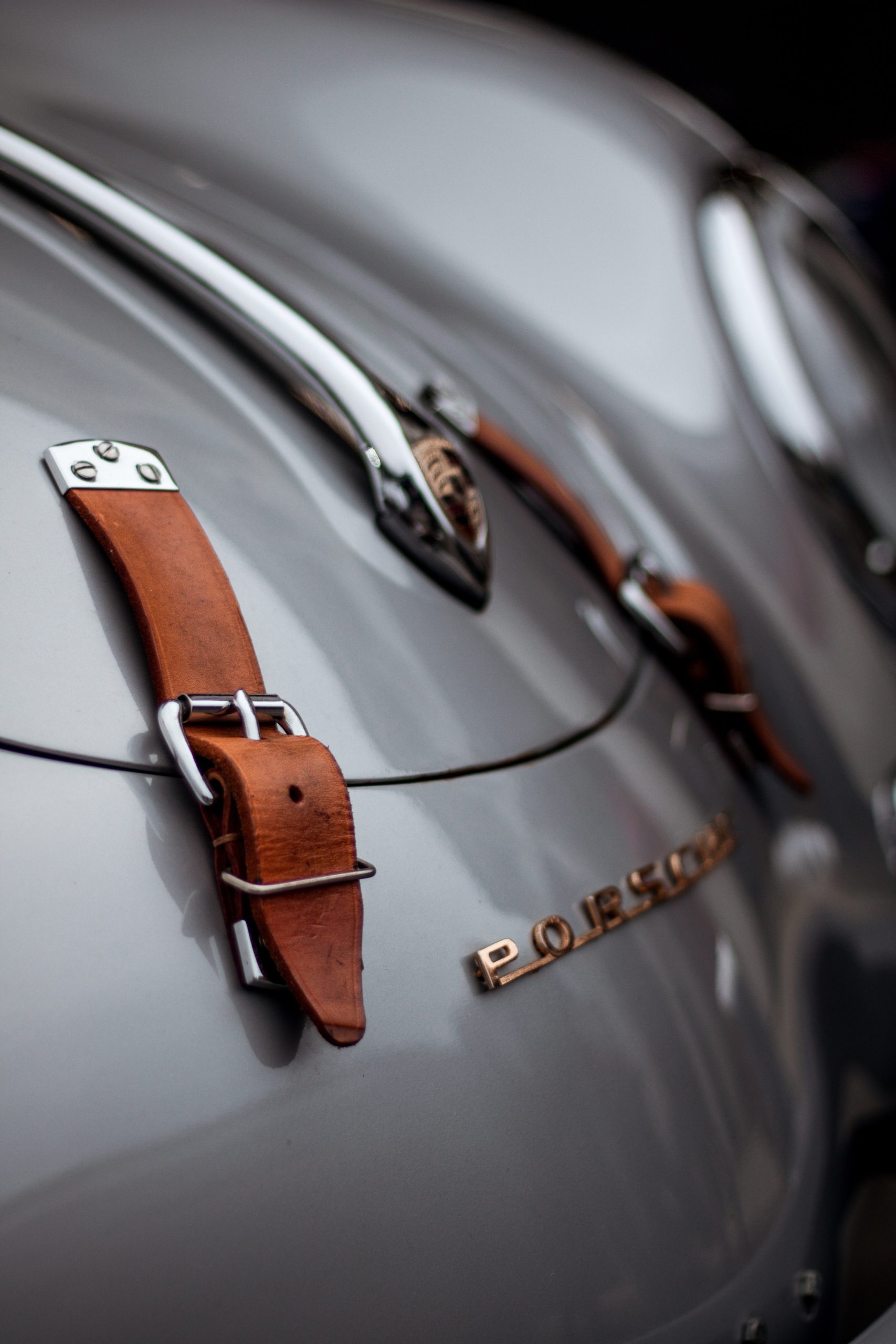In 2002, the entire generation of the 996 was facelifted. The Carrera 4S was introduced and got the new engine...
225 results for
911 research hub
The 911 S was introduced to increase the performance potential of the very successful 911. It had a more powerful...
Theon Design, to those that are deeply intertwined in the world of bespoke Porsche 911 restomods and customs, is a...
Autocar reviews a 964-generation Porsche 911 which has been modified by Theon Design, a firm based in Oxfordshire. Find out...
A Few Reasons Why a 997.1 Carrera May Be the Best 911 for a First Time Buyer With prices softening...
Note: Some images from this article provided by Roger Katz. The Type 964 Porsche 911 was a revolutionary car when...
Imagine, if you will, that you are in Paris, France, in October 1972. There is an automobile show, a fairly...
Porsche 997 Carrera gets THE WORKS! Paint Correction, Ceramic Coating, PPF I have a confession to make. I like to...
Everybody knows we are huge fans of the Porsche 997, but if you were shopping for one today, which one...
The replacement for the SC series came in 1984 as the 911 3.2 Carrera, reviving the Carrera name for the first time since 1977. This was the last iteration in the original 911 series, with all subsequent models featuring new body styling and new brake, electronic, and suspension technologies. Almost the same galvanised body as the SC. Engine was claimed to be 80 per cent new, and the first production 911 to feature an ECU to control the ignition and fuel systems.
Porsche 911 (G-Series) (1973 – 1989) Story & History G-Model – The 2nd Generation Porsche 911 Premiere: September 12, 1973...
The Porsche factory had 93 Turbo chassis left. These were all transferred to Porsche Exclusiv and hand built as the very special 964 Turbo 3.6 S. They were offered with normal, or ‘Flachbau’ slant nose front ends. While the vast majority of Turbo S’ were fitted with the ‘Flachbau’ nose as a no-cost option, the Turbo S could also be had with the traditional 964 nose as well. In all, 76 Flatnose cars were made while 17 non-Flatnose (known as Package option) cars were made. These cars were also fitted with the X88 option, which increased power to 380 hp. 75 flatnose units were produced.
19 non 'slant nose' or Package cars were made for the USA only. Very rare. The Porsche factory had 93 Turbo chassis left. These were all transferred to Porsche Exclusiv and hand built as the very special 964 Turbo 3.6 S. They were offered with normal, or ‘Flachbau’ slant nose front ends. While the vast majority of Turbo S’ were fitted with the ‘Flachbau’ nose as a no-cost option, the Turbo S could also be had with the traditional 964 nose as well. In all, 76 Flatnose cars were made while 17 non-Flatnose (known as Package option) cars were made. These cars were also fitted with the X88 option, which increased power to 380 hp.
Porsche 911 (992) The Ultimate Model Guide 8th Generation Porsche 911 (2020 – Present) The Story / Model Guides / Performance & Specs / Data &...
Porsche 911 (991) The Ultimate Model Guide 7th Generation Porsche 911 (2012 – 2019) The Story / Details / Model Guides / Performance & Specs / Data &...
Porsche 911 (997) The Ultimate Model Guide 6th Generation Porsche 911 (2005 – 2013) This is your center for all...
Porsche 911 (996) The Ultimate Model Guide 5th Generation Porsche 911 (1998 – 2005) The Story / Buyers Guide / Timeline / Details / Model Guides / Performance &...
Porsche 911 (993) The Ultimate Model Guide 4th Generation Porsche 911 (1994 – 1998) The Story / Timeline / Details / Model Guides / Performance & Specs / Data &...
Porsche 911 (964) The Ultimate Model Guide 3rd Generation Porsche 911 (1989 – 1994) The Story / Timeline / Details / Model Guides / Performance & Specs / Data &...
Porsche 911 (G-Series) The Ultimate Model Guide 2nd Generation Porsche 911 (1974 – 1989) The Story / Timeline / Details / Model Guides / Performance & Specs / Data &...
Porsche 911 (Classic) The Ultimate Model Guide 1st Generation Porsche 911 (1964 – 1973) The Story / Timeline / Details / Model Guides / Performance & Specs / Data &...
If the base 911 coupe doesn't do it for you, maybe the Carrera S coupe gets you over the line. For about $20k more, you get more horsepower, torque vectoring and bigger wheels. The Carrera S uses a version of the 3.0L twin-turbo flat-6 that generates 443 hp and 390 lb-ft of torque. Torque vectoring allows different amounts of torque to be distributed between drive wheels on the same axle. This means the inside wheel can turn slower than the outside wheel for improved cornering.
Porsche has made a lot of cracking 911s over 50+ years. We Pick the Best Production, Limited Edition & Race...
The 1989/90 change of model year saw the launch of the Porsche 911, 964 series onto the market. This 911 model was initially available as a Coupe, Targa and Convertible. From model year 1991 onwards Porsche also introduced its top-of-the-line model - the Turbo - into this series. In spite of bearing a major similarity in terms of look to the naturally-aspirated model, the extended wings remained. This meant that the new Porsche could retain its turbo look. The 964 Turbo model was the successor to the Porsche 930. The 964 Turbo was the end of an era, the last of the single turbo rear-wheel drive 911 Turbos.
Only 50 units made. The 911 Turbo Limited Edition comes equipped with the 330 bhp power unit normally only available in the 911 Turbo with Sport Equipment. In addition, the fitment of a limited slip differential as standard ensures the the increased engine performance can be used to it’s fullest extent. This Limited Edition also adopts the rear wheel air intakes of the Sport Equipment version. Essentially an SE without a slantnose front.
The first generation of the Porsche 911 begins in late 1964 and goes through 1968. The "base" model was an instant hit. During this period, Porsche would make continuous improvements and tweaks to the body, to its short wheelbase (SWB) chassis, and to its 2.0 liter flat six engine. Model year 1968 would be the last for the early 911, a transition that would begin with the introduction of the higher output 911S in 1967, followed by the 911L and a new entry level 911T in 1968, and finally, the 911E in 1969. The base 911 was available as both a Coupe and Targa (starting in '67).
For this 991 generation Targa, Porsche went back to the original Targa concept, albeit with an even sexier design and some very cool technical tricks to boot. Porsche wanted to resurrect its classic design, but the company feared that owners would not want to get out of the car, lift off the roof panel, and stow it in the trunk. The other issue was, in the words of 911 product line director Dr. Erhard Mossle, "that the manual solution was a little bit old-fashioned." The 911 Targa 4 gets the same 350 horsepower, 3.4-liter six-cylinder motor as its hardtop siblings.
The 991 Carrera S continued the time honored Porsche 911 tradition of growing in physical size and power. Over the years the 911 has continued its evolution from a pure sports car to a luxurious super-car and the 2012 Carrera S Coupe was no exception. The seventh generation 911 launched in 2012 and it sits on a new platform, with a longer wheelbase and shorter overhangs. It also featured new headlights and taillights. Features a 3.8-liter flat-six engine mated as standard to a world's first seven-speed manual transmission.
The 911 Carrera Cabriolet is a true Porsche, from top to bottom. Like the rest of the range, the base Cabriolet got a mild refresh in terms of design that made it more modern and a little more crisp. The engine was upgraded, now with direct direction. The direct-injection 3.6-liter engine also got new air filters, a more free-flowing exhaust system, and reduced engine friction, making it more powerful than before. It has peak power of 339 bhp @ 6500 rpm and torque of 287 ft lbs @ 4400 rpm. The Carrera equipped with PDK covers 0-60 mph in 4.5 seconds and runs to a top speed of 179 mph.
Porsche refers to it as a new generation, even though the internal chassis code 997 remains unchanged. The 997.2 therefore is more of a mid-term facelift with some significant technological changes. Notably, the water-cooled flat-six engines get direct-injection technology, and a seven-speed, dual-clutch transmission replaces the previous five-speed Tiptronic automatic while the shift-it-yourself option remains a six-speed. Base Carrera coupe gets 339 bhp and 287 ft lbs and a 0.3 second faster 0 - 60 mph time of 4.5 seconds. Top speed now 179 mph. A nice update indeed.
The 997 Targa design is the same as the 996s, with the power-operated panoramic sunroof and lifting rear window glass. The 997 Targa version's entire operation benefitted from thinner glass that cut approximately 4.2 pounds from its weight relative to the prior 996-series Targa. The 997 Targa 4 has softer spring rates than the coupe, a more generous helping of leather in the cabin, a better tally of standard equipment. The Targa 4 might therefore be all the 911 you ever want; not the fastest or the most visceral, but certainly the most complete car in a very impressive bunch. A great all-rounder.
While the 997 Carrera 4S coupe sold a healthy 15,056 units between 2006 and 2008, the equally exciting Carrera 4S Cabriolet sold 12,587 units, making it a pretty popular 997 model. The reason is pretty simple. It had a gorgeous wide-body stance, all-wheel drive traction and that potent 3.8 L Flat 6 that was good for 350 bhp and 295 ft lbs of torque. The first convertible 911 that was as good a performer as it coupe siblings with the added benefit of open top driving in the summer with the comfort of being a great daily driver all year round.
The 997 Carrera 4 was the all-wheel-drive version of the standard 997 Carrera and it arrived as a 2006 model year car (along with the 4S models). The 997.1 Carrera 4 had a3.6 L Watercooled Flat 6 (M96/05) engine that was good for 321 bhp @ 6800 rpm and 273 ft lbs @ 4250 rpm. It had a sub 5 second 0 - 60 mph hour time and a top speed of 174 mph. The transmission (six-speed manual or five-speed Tiptronic) feeds a forward propshaft that mates to a viscous coupling unit with a front differential.
The 997 Carrera S was the first step up in performance over the base 997 Carrera. Available over two distinct generations, the 997.1 Carrera S used a 3.8-liter engine producing 355hp – the available X51 Powerkit bumped that number to 376hp. From 2009 onwards, the 997.2 Carrera S offered 380hp from 3.8 liters. Besides a more powerful engine, it also comes standard with 19 inch wheels, larger brakes, and a lowered suspension with PASM.
The base Carrera has essentially the same 3.6 L flat-6 engine that its predecessor, the Type 996 Carrera used, now good for 321 bhp @ 6800 rpm and with torque of 273 ft lbs @ 4250 rpm. The sprint from 0 to 60 mph is over in just 4.80 seconds and top speed is 177 mph. The quarter mile is over in a respectable 13.1 seconds. The 911 Carrera is now faster, more stable, more precise and forgiving, an altogether superior-make that more efficient-sports car than the 996.
2,500 cabriolets were made in the 993 Carrera 4. The 993 Carrera 4, sold between 1995 and 1998, uses the same powerplant as the standard 993 Carrera, but puts power down to all four wheels through a 6-speed manual transmission. A “Carrera 4” badge on the tail, along with silver-painted brake calipers and clear front and side turn signals, help distinguish the all-wheel drive C4 from the C2 sibling.
The 993 Carrera 4, sold between 1995 and 1998, uses the same powerplant as the standard 993 Carrera, but puts power down to all four wheels through a 6-speed manual transmission. A “Carrera 4” badge on the tail, along with silver-painted brake calipers and clear front and side turn signals, help distinguish the all-wheel drive C4 from the C2 sibling. Approximately 4,700 coupes and 2,500 cabriolets were made. It was replaced by the Porsche 911 Carrera 4 (996 generation) in 1999.
Introduced in 1994 the Porsche 911 Cabriolet was more of a Grand Tourismo vehicle than a sports car. The 911 Cabrio featured the same cues as its coupe version, but with a few differences apart from the lack of a fixed roof, of course. The 3.6-liter engine was offered in two versions, with 275 hp and 285 hp. The latter featured the VarioCam system. Both versions were mated to either a 6-speed manual or a 4-speed automatic.
Introduced in late 1994 the standard 911 Carrera of the 993 generation was fitted with a development of the M64 3.6-liter flat six that had been found in the prior 964 generation. With a redesigned exhaust system and new hydraulic lifters, the engine produced 272 horsepower. For the 1996 model year, a Targa variant was introduced, and a variable intake runner system (called VarioRam) was added to the entire Carrera lineup, bumping horsepower to 285. Approximately 23,000 coupes were built, 15,500 cabriolets, and 4,500 Targa's, in both manual and automatic (Tiptronic) transmission. Overlapping with the last year of production, it was replaced by the 911 Carrera of the 996 generation for model year 1998.
The flat six in the Carrera 996 was a newly-developed flat-six engine that offered 300 hp. It was mated as standard with a six-speed manual. A 5-speed automatic (Tiptronic) with manual override to shift gears was on the options list. As always, the Carrera 2 was rear-wheel-drive. Designed as a grand tourer, the Porsche Carrera Cabriolet was the base version for the open-top 911 range in 1998. The retractable roof was able to be stowed away in 20 seconds at speeds of up to 50 kph (31 mph), like the rest of the 911 convertible range. With the roof up, the car was tested in the wind tunnel at speeds of up to 338 kph (210 mph).
The 996 series was a monumental update to the 911 story. The Type 996 introduced water-cooled engines and it also ushered in a new body design. The roof line with a windscreen which is around five degrees flatter gives the side view a more fluid look. Gone was the "classic" 911 design, the entire main body now much sleeker. The flat six in the Carrera 996 was a newly-developed flat-six engine that offered 300 hp. It was mated as standard with a six-speed manual. A 5-speed automatic (Tiptronic) with manual override to shift gears was on the options list. As always, the Carrera 2 was rear-wheel-drive.
In spite of its 911 moniker, the car actually had very little in common with the 911 of the time, only sharing the front and rear headlamps with the production sports car. Designed and developed to compete in the GT1 class of sportscar racing, which also required a street-legal version for homologation purposes. It was powered by a twin-turbo flat 6 that was good for 600 bhp. The 1996 911 GT1 clocked at a top speed of exactly 330 km/h (205 mph) on the legendary Mulsanne Straight.
For the 1974 racing season 911 Carrera RSR 3.0 (246 kW) and RSR Turbo 2.1 (338+ kW) were created - the 3.0L for the customer teams and the 2.1 turbo for Porsche’s own team. The Carrera RSR 3.0 was made in small numbers for racing. The 3.0 RSR would go on to become the most successful Group 4 racing car of its time thanks to its combination of low weight, immense Porsche 917 brakes, impeccable handling, and a 330+hp naturally aspirated flat-6.
Introduced in 1973, the RSR was a factory-built racing car based on the 911 chassis. The Porsche 911 Carrera RSR 2.8 was the first 911 to ever wear the RSR badge. Homologated for racing by the iconic 1973 Porsche 911 Carrera RS, the RSR’s racing career got off to the perfect start thanks to Brumos Racing’s overall triumph in the 1973 24 Hours of Daytona, while a factory car won the latest ever Targa Florio road race. For the privateer in the mid-1970s who wanted to go sports car racing this was the chosen weapon.
Porsche enthusiasts had long speculated about how a Cayman would perform with a 911 engine. The automaker answered with the...
In a new video, carwow on YouTube pitted two seemingly disparate contenders against each other: the iconic Porsche 911 Turbo...
Presented by Bonham Auctions, the ’96 Porsche Carrera RS is one of the rarest 911 Type 993 variants ever made....
RUF, the renowned German automaker famed for transforming Porsche platforms into high-performance machines, has once again showcased its engineering prowess...
Kaege Retro, a German-based company, has been building 993-based Porsche restomods since 2010. When Roger Kaege set out to design...
Gunther Werks, headquartered in Huntington Beach, California, was established by Peter Nam, CEO of the carbon-fiber parts manufacturer Vorsteiner, with...
While the 993-generation of Porsche’s legendary 911 marked the end of the air-cooled era, it also sparked a thriving niche...
The Porsche 993 is often hailed as the pinnacle of the air-cooled 911 era. But even within this iconic model,...
Gunther Werks was founded on the vision of what if Porsche had continued evolving the 993 model with modern materials...
Founded in Los Angeles in 2009, Singer is globally renowned for bespoke restorations of Porsche 911 sports cars. Based on...
RUF introduced the RT12 during the initial phase of the 997-generation Porsche 911, following the 996 model. Unlike typical sports...
Like a few other brands, Porsche was formed many decades ago not so much to build the perfect road car,...
In a recent video from Magnus Walker on YouTube, we get introduced to a 1993 Porsche 964 convertible owned by...
Porsche, for lack of a better term, is on a roll. They are one of the few companies that make...
A rare gem has surfaced on Bring A Trailer – a 1994 RUF RCT, possibly the only one ever built...
While many have modified the 911 over time, Gunther Werks stands apart, envisioning a scenario where Porsche continued refining the...
Before the Porsche Taycan was released, if you wanted a fast EV, you weren’t exactly spoiled for choice. When 2019...
The 981 Cayman, introduced in 2013, marked a significant leap forward in Porsche’s lineage of sports cars, drawing ever closer...
At the start of 2023, after a few years of teasing and testing, the Porsche Type 963 LMDh Hypercar was...
By the time the mid-1960s arrived, Ferdinand Piëch had got his hooks well and truly into Porsche’s motorsport programme. With...
Setting the Scene The 1960s represented for Porsche, the busiest decade in the company’s history to date, with ten new...
The 964 generation has become highly popular, primarily due to its iconic styling and air-cooled design. Among the 964 models,...
Kalmar Automotive, enhancer and restorer of bespoke sports cars and special purpose-built adventure vehicles, has revealed its first water-cooled ‘Adventure...
“To hell with the timing. This is more important,” Wilfried Reinhardt says to himself. He hesitates for just a moment,...
While originating from the East Coast, 5001 Workshop founder Marlon Goldberg gravitates towards building Porsches for their experience, not their...
22,093 feet above sea level– no car has ever gone higher. On December 2, 2023, racing driver Romain Dumas set...
The Porsche 718 Cayman GT4 RS has been designed for maximum driving pleasure. It stands as the pinnacle of the 718 Cayman...
The Porsche GT3 RS from the 992-generation is an exceptional performance car that focuses on track driving. It is Porsche’s...
Porsches have consistently attracted tuners and racing teams aiming to enhance the performance of already formidable sports cars. The 356...
TECHART has unveiled a head-turning new lightweight rear spoiler for the Porsche 911 Carrera Coupe models and the GT3 Touring....
One of the limited run of 25 Porsche 911 models configured to the 400R standard by Gunther Werks is currently...
After debuting in its famed role in “Transformers: Rise of the Beasts”, the Autobot Mirage and the movie car, a...
One of the most colorful episodes in the history of Porsche was their 13th Le Mans victory in 1994 with...
The GT4 RS stands as the pinnacle of the 718 Cayman lineup, delivering a raw, loud, and brutally powerful driving...
A remarkable and low mileage example of a Porsche 911 GT2 RS Clubsport, number 98 out of a limited production...
The third example commissioned at Rauh-Welt Begriff Los Angeles, “JennaBelle,” was individually crafted according to custom specifications by RWB’s founder,...
In this video from AutoTopNL, we get to see and hear a RUF SCR 4.0 being pushed to its limits...
Edit Automotive has unveiled its vision of the Porsche 911 named the g11, an intricately crafted sports car predicated on...
Singer Vehicle Design has emerged as arguably the foremost name in the realm of customizing Porsche 911s to date. Their...
The Iconic Autobody 386 Speedster Homage pays a handsome tribute to the legendary Porsche 356 Speedster, built on the well-regarded...
The Porsche 911, the undisputed king of sports car evolution, has continued to be transformed since its 1963 debut. One...
The “Carbon Noire Commission” is a remastered version of the 911s based on the 933-generation by Gunther Werks. The car’s...
Porsche honored As the honored marque of this year’s Festival of Speed the sportscar manufacturer showed off with different actions....
Featured here is a 1995 Porsche 993 that has undergone the highly coveted RWB (Rauh-Welt Begriff) conversion package, resulting in...
Porsche Vision 357 Goodwood debut Celebrating three decades of the renowned Goodwood Festival of Speed, Porsche presents the Porsche Vision...
Porsche records a significant increase in sales Just announced by Porsche, the first six months of 2023 ended successfully with...
Commissioned for ‘Mr. Le Mans’ Tom Kristensen, the Kalmar 7-97 is an homage to the Danish driver’s inaugural Le Mans...
The Glasgow Commission, reimagined by Singer, is based on a right-hand drive 964 Targa. The car showcases carbon fiber bodywork...
It only happens once in a lifetime; your 75th birthday. This June 8th marks Porsche’s 75th anniversary so Bring-a-Trailer auction...
Live now on PCARMARKET is a Canadian-market 1992 Porsche 964 Carrera 2 Coupe that was commissioned as a one-of-a-kind backdate...
Akira Nakai, the renowned customizer behind RWB (Rauh-Welt Begriff) Porsches, is responsible for creating some of the world’s most iconic...
Around a year ago, we wrote an article about the future of Porsche powertrains, covering full electric, hybrid, and sustainable...
Gunther Werks’ latest creation, Project Tornado, is a road-legal coupe that follows the company’s tradition of building models around the...
If there is one thing that can be said about those who are enthusiastic about, or even own, a car...
Gunther Werks Dunkelgrun Commission – one of 25 remastered 993-generation 911s the custom shop will build. Photos by Gunther Werks...
Porsche, as we all know, is a name that is synonymous with clean, simple lines that highlight the peak of...


